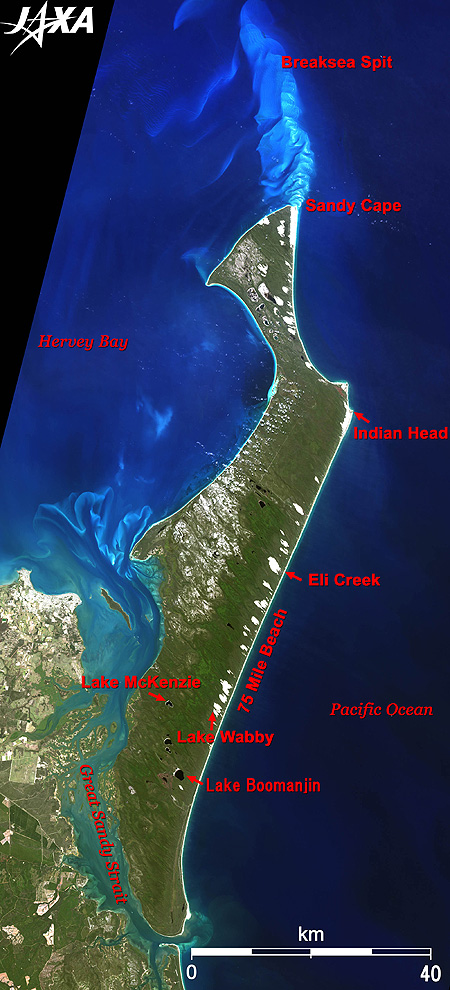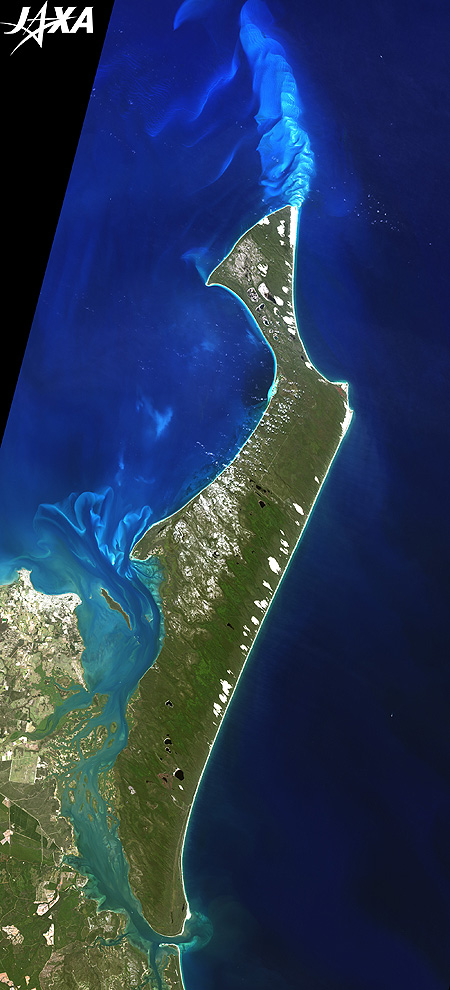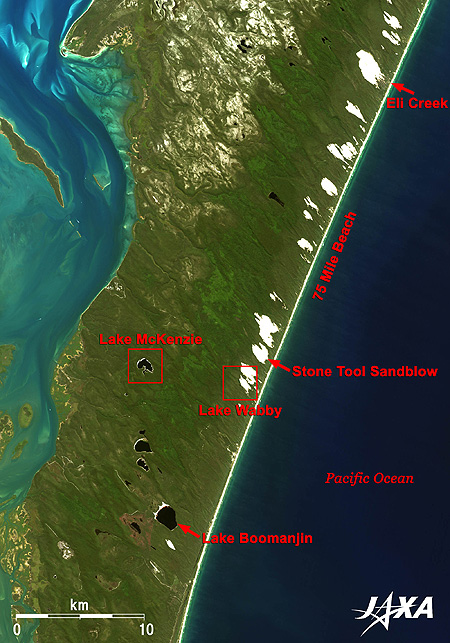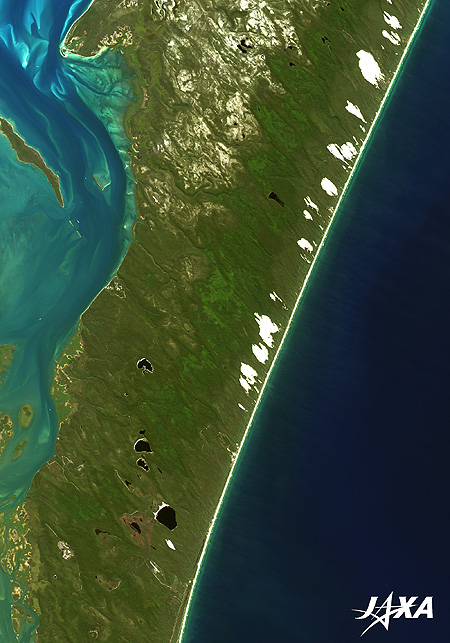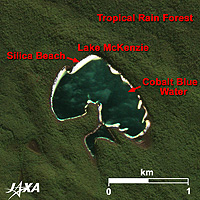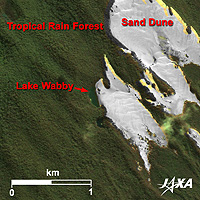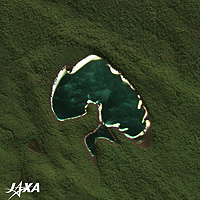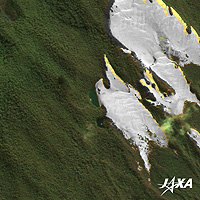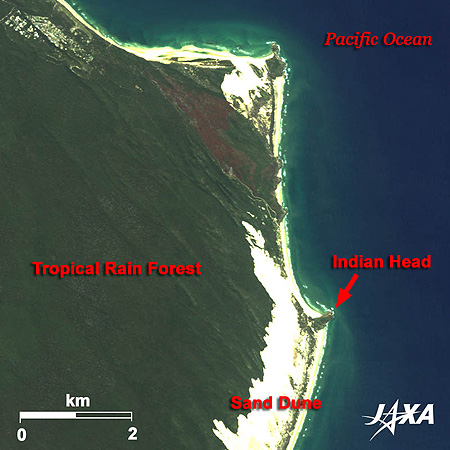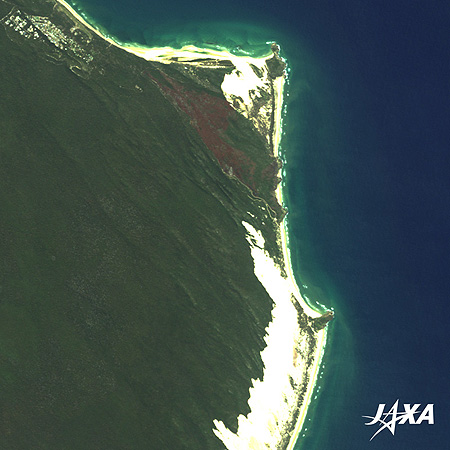Seen from Space 2009
Fraser Island – The World's Largest "Sand Island" in Australia |
|
Fig. 1. Fraser Island
Fraser Island(kmz, 7.21MB, Low Resolution) as seen on Google Earth. 
Fraser Island, "The Sand Island"
Figure 1 depicts Fraser Island as observed in September 2008. Fraser Island, located in the middle of the east coast of Australia, is formed by sand. Sand from the east coast of Australia, eroded by heavy rain more than 140,000 years ago, deposited off the east coast and created "Sand Island". (There is another view that the sands came from Antarctica.) Fig. 2. Close-up Image of Central Fraser Island

The Wonder of Sand Island
This sandy island covered by tropical rain forests has more than one hundred freshwater lakes and many creeks. Despite the sands that make up the island, a huge amount of sand absorbs and stores enough rain in the groundwater layer, thus enabling rich tropical rain forests to grow. 
Sand Island is AliveSand dunes located on the east coast of the island are always moving. Sandblows form when strong southeasterly winds break through the vegetation cover, driving sand from the eroding dunes. They engulf forests in their path, at rates of up to 1 m each year. Sometimes, the old buried forests appear in the course of the sand movement toward inland. The sand dune, where Aborigine’s stone tools were found, is named "The Stone Tool Sandblow". Fig. 5. Indian Head

A Straight Coast of Sand IslandThere are three rock formations in the northeast coast of the island. Indian Head is a 60-meter-high steep rock cape that was formed by igneous rock through ancient volcanic activities. The mostly straight coast line of more than 100 km starting from here to the south is commonly called "Seventy-Five Mile Beach". Four-wheel-drive vehicles running on the beach must follow the road rules. Light-planes sometimes use this beach, as well. 
Ecotourism of Sand IslandEcotourism is the system of returning profits from sightseeing business to preserving the natural environment of an area. The Australian government is one of the first in the world to actively promote ecotourism. Fraser Island is a ranking resort in the Eco Certification Program of Ecotourism Australia for its environmentally friendly eco-resorts and various eco-tours that provide environmental education to the visitors. Explanation of the Images: (Click the images twice to enlarge.)
AVNIR-2 has four observation bands. The composite images are usually produced by assigning red to Band 3 (610 to 690 nm), green to Band 2 (520 to 600 nm), and blue to Band 1 (420 to 500 nm). The resulting images have natural coloring as if seen by the naked eye. Thus, the following colors designate ground objects:
(Figures 3 and 4) |
